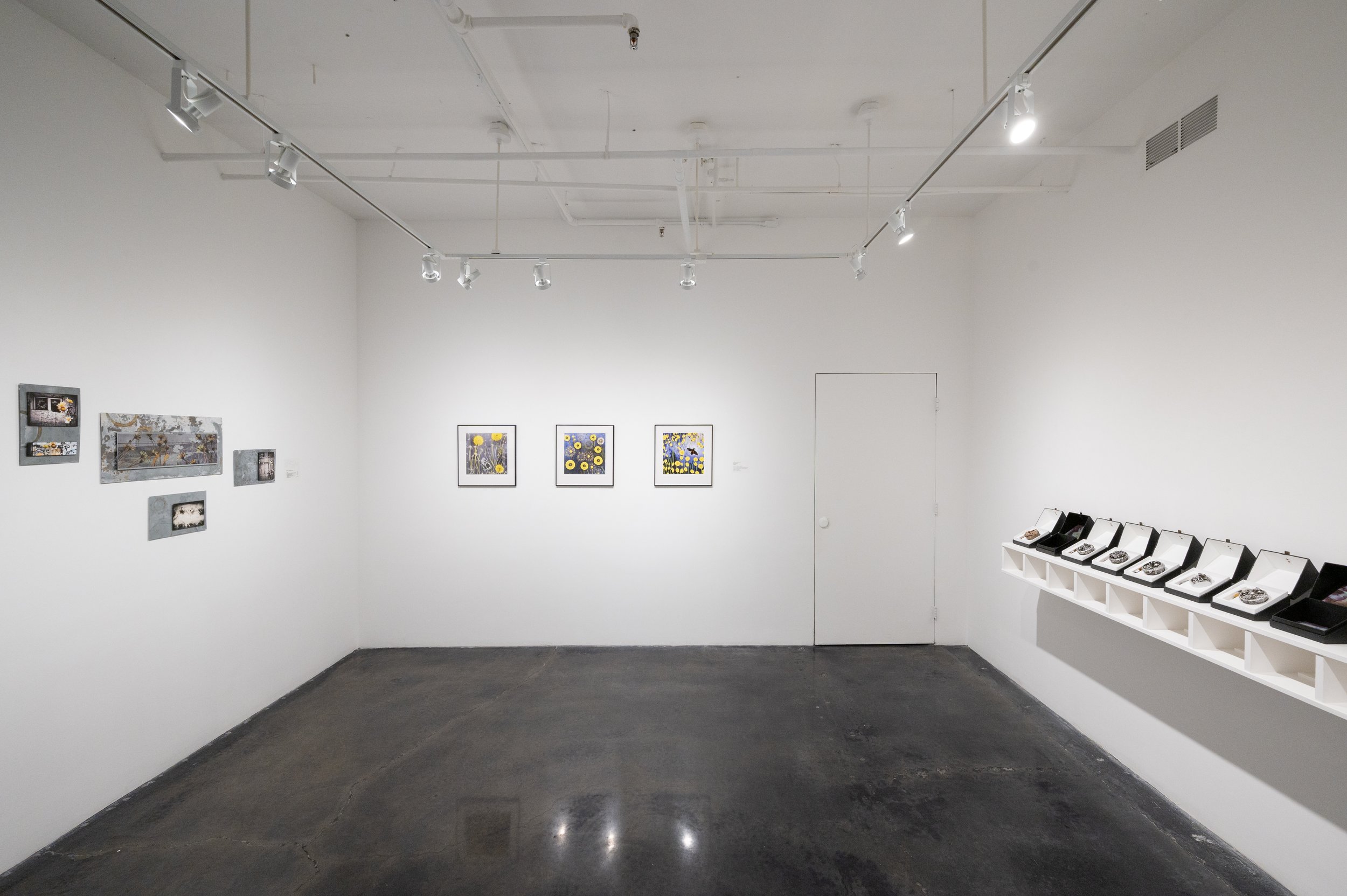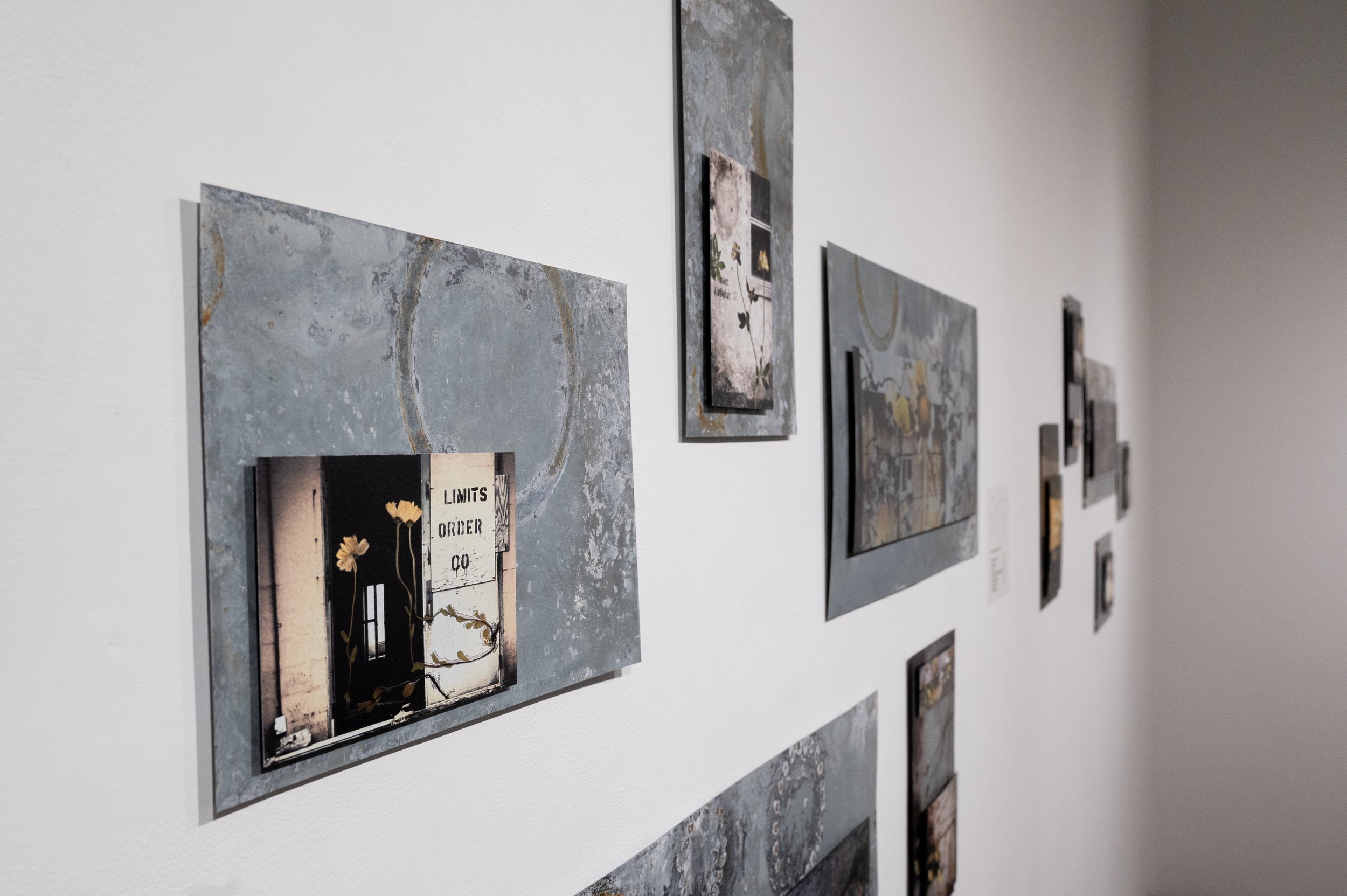NOVEMBER 2023
NORTH GALLERY
Wunderkammer: Boundaryless Plants | Sandra Talbot
To the medieval mind, the Order of Nature was reflected in the ‘typical’ form and function of natural phenomena. Anything rupturing this order—the novel, rare, capricious, uncanny ‘sports,’ monstrous objects brought back from distant lands—filled Wunderkammers (cabinets of curiosities), the precursors of herbaria and natural history collections. These uncanny sports evoked not only a sense of wonder, but collective discomfort, and even terror, as well. Such discomfort, even collective terror, resides in the minds of many contemporary researchers and conservationists when faced with the spreading of alien species into novel environments.
I participated in 20th and 21st century scientific expeditions to remote, treeless, windswept islands of Alaska’s Aleutian Island Archipelago and allied island groups where landfall was made during the Bering Expedition. These islands remain largely uninhabited, yet almost all have endured negative ecological impacts associated with military, cattle ranching, fox farming and other (western) human activities during the 19th and 20th centuries. Following years of research solely on native plant species, during which introduced plants rarely occurred in our vegetation study plots, I noticed the transition of introduced plant species into invasiveness. That is, they have traversed the threshold between ‘introduced’ and a state wherein they expand into and alter a novel environment.
The eradication of invasive plants, difficult even in easily accessible places, is less likely each year as the invasives’ ranges increase on these islands. As such, invasive plant species are liable to continue impacting indigenous plant communities, eventually becoming integral (likely dominant) components of the islands’ vegetation communities. Given a parallel to western colonial expansion into Alaska, these invasive plant species can be viewed as proxies for human expansion and community disruption. Many of the common invasive plant species on these islands—among them, the ox-eye daisy, the dandelion, the bird’s-foot trefoil and several hawksweed species—are characterized by changeable taxonomic nomenclature, morphological variability, and varying ploidy levels. For example, on Simeonof Island, in the Shumagin Island group south of the Alaska Peninsula, the ox-eye daisy is subject to relatively high levels of fasciation (see The Pleasure of Natural Sports). Via morphological variability, hybridization and ploidy, these invasive plant species obscure the boundaries of classical Linnean nomenclature, and via invasiveness breach the ecological boundaries of long-established indigenous plant communities. They are “boundaryless plants.”
This exhibition presents a Wunderkammer of alien, strange, unwelcome and/or unidentifiable (and sometimes beloved) plant species to draw attention to the presence of invasive plant species in far-flung islands of western Alaska. The Wunderkammer includes photographic imagery, including of herbarium specimens collected on the islands, printed on steel plates distressed using iron artifacts also collected on the islands, and cast aluminum or bronze and various artifacts in repurposed commercially-made boxes. Four prints featuring imagery of dandelions include digital imagery generated using artificial intelligence, a technology that increasingly evokes a collective discomfort, even terror, in contemporary minds but also forces us to examine the boundaries of human intelligence and creativity.













